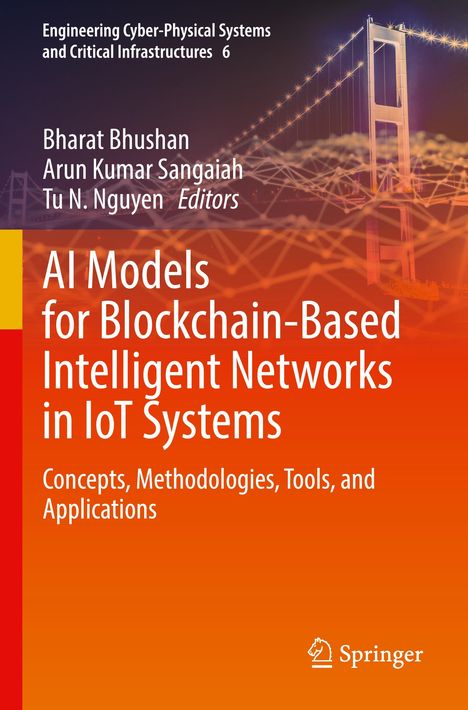AI Models for Blockchain-Based Intelligent Networks in IoT Systems, Kartoniert / Broschiert
AI Models for Blockchain-Based Intelligent Networks in IoT Systems
- Concepts, Methodologies, Tools, and Applications
(soweit verfügbar beim Lieferanten)
- Herausgeber:
- Bharat Bhushan, Tu N. Nguyen, Arun Kumar Sangaiah
- Verlag:
- Springer Nature Switzerland, 06/2024
- Einband:
- Kartoniert / Broschiert, Paperback
- Sprache:
- Englisch
- ISBN-13:
- 9783031319549
- Artikelnummer:
- 11894359
- Umfang:
- 404 Seiten
- Nummer der Auflage:
- 2023
- Ausgabe:
- 2023
- Gewicht:
- 610 g
- Maße:
- 235 x 155 mm
- Stärke:
- 22 mm
- Erscheinungstermin:
- 11.6.2024
- Hinweis
-
Achtung: Artikel ist nicht in deutscher Sprache!
Weitere Ausgaben von AI Models for Blockchain-Based Intelligent Networks in IoT Systems |
Preis |
|---|
Klappentext
The goal of this book is to explore various security paradigms such as Machine Learning, Big data, Cyber Physical Systems, and Blockchain to address both intelligence and reconfigurability in various IoT devices. The book further aims to address and analyze the state of the art of blockchain-based intelligent networks in IoT systems and related technologies including healthcare sector. AI can ease, optimize, and automate the blockchain-based decision-making process for better governance and higher performance in IoT systems. Considering the incredible progress made by AI models, a blockchain system powered by intelligent AI algorithms can detect the existence of any kind of attack and automatically invoke the required defense mechanisms. In case of unavoidable damage, AI models can help to isolate the compromised component from the blockchain platform and safeguard the overall system from crashing. Furthermore, AI models can also contribute toward the robustness and scalability of blockchain-based intelligent IoT networks. The book is designed to be the first-choice reference at university libraries, academic institutions, research and development centers, information technology centers, and any institutions interested in integration of AI and IoT. The intended audience of this book include UG/PG students, Ph. D. scholars of this fields, industry technologists, young entrepreneurs, professionals, network designers, data scientists, technology specialists, practitioners, and people who are interested in exploring the role of AI and blockchain technology in IoT systems.
Biografie (Bharat Bhushan)
Dr. Bharat Bhushan received an M.S. in mechanical engineering from the Massachusetts Institute of Technology in 1971, an M.S. in mechanics and a Ph.D. in mechanical engineering from the University of Colorado at Boulder in 1973 and 1976, respectively, an MBA from Rensselaer Polytechnic Institute at Troy, NY in 1980, Doctor Technicae from the University of Trondheim at Trondheim, Norway in 1990, a Doctor of Technical Sciences from the Warsaw University of Technology at Warsaw, Poland in 1996, and Doctor Honoris Causa from the Metal-Polymer Research Institute of National Academy of Sciences at Gomel, Belarus in 2000. He is a registered professional engineer (mechanical) and presently an Ohio Eminent Scholar and The Howard D. Winbigler Professor in the Department of Mechanical Engineering, Graduate Research Faculty Advisor in the Department of Materials Science and Engineering, and the Director of the Nanotribology Laboratory for Information Storage & MEMS/NEMS (NLIM) at the Ohio State University, Columbus, Ohio. He is an internationally recognized expert of tribology on the macro- to nanoscales, and is one of the most prolific authors in the field. He is considered by some a pioneer of the tribology and mechanics of magnetic storage devices and a leading researcher in the fields of nanotribology and nanomechanics using scanning probe microscopy and applications to micro/nanotechnology.

